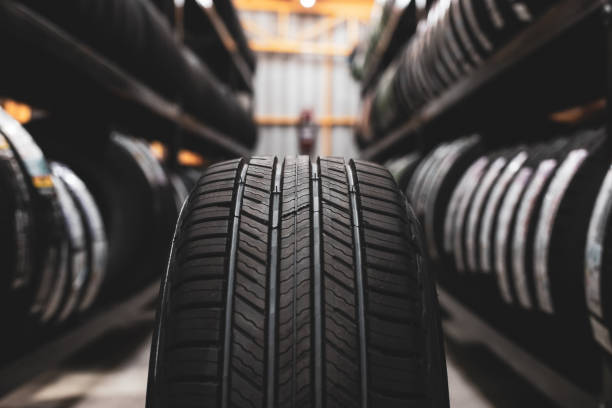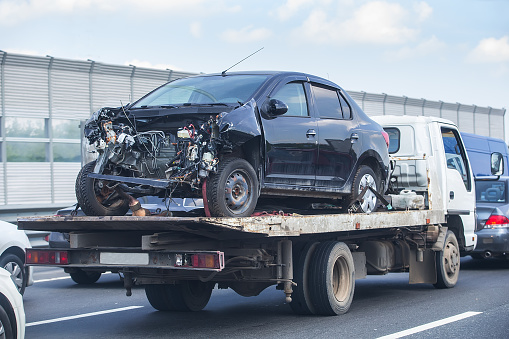Living as a Car Crash Victim

Nothing can quite prepare a person for the rapid-fire thoughts and emotions that occur during an automobile accident. First, there is the regularity, the tranquility, the utter mundanity of the drive that precedes the crash (because that’s likely how the moment before an unexpected impact will feel﹘the degree of normalcy will be an exact mirror to the degree of shock). Then there is confusion and surprise﹘too early for fear because the accident is happening faster than the brain can think﹘followed by an acknowledgment, in the blink of an eye, that you are currently experiencing a car accident.
Depending on the nature of the crash and how long the car remains in motion (or how quickly it goes from being in motion to complete immobility), then the terror grips you, because this is something we’ve all been trained to fear. This is why they showed us those videos in driver’s ed class. What feels like a million thoughts and questions will follow: Will I come out of this alright? Paralyzed? How are my passengers? There go the groceries. I can’t afford this. Is the other driver okay? Why did they do this to me? Why did this happen? Why did I risk it?
And on and on and on, all before the police arrive.
The Burden of Experience
They say that ignorance is the luxury of youth. In many instances, the process of education and experience is a voluntary one. It’s not always pleasant, but choosing to learn by experience is one of the most empowering things we can do. For every person attempting to buy a house for the first time, who has little practical experience with mortgages, equity, HOA fees, or even knowing if they’re operating in a seller’s or a buyer’s market, there is definitely a feeling that one has some growing up to do, regardless of their age. But they’re learning on their own terms. Car crash victims are forced to learn by experience, and no matter how young they are, they leave part of their youth behind in the wreckage. What they take away may be with them for the rest of their lives.
In the aftermath of an accident, the education comes at you fast, and the topics are diverse. First on the list is biology. As the Schoolhouse Rock song reminds us, “
Your heart and lungs are tucked away
in there behind your ribs.
Those bones have been protecting them
Since we were little kids
Shinbone connected to the knee bone
Knee bone connected to the thigh bone
And here’s how they really fit together.
Ligaments are what link bone to bone.
Cartilage that cushions in between.
Muscles hook on, by the tendons,
So here’s what’s happenin’ in your knees most ev’rytime you bend ‘em.
Luckily, today is the best day in all of human history to be injured, thanks to a knowledgeable staff of doctors and nurses. Using the technology at their disposal you can learn all about what a humerus is, or all the ways your shoulder can get injured. As victims are treated and recover from injuries, they add another class to their course load: the law.
Taking Responsibility
When reminiscing on the experience of a car accident, especially for the benefit of people who weren’t there, injuries get much of the spotlight. This is only natural; no one can help it when they rubberneck at the scene of a crash, even if they can’t help but dwell on the physical toll years later. It’s simply a tangible manifestation of the accident’s impact (no pun intended). But the extemporaneous lessons are no less important because victims get to see firsthand how civic entities such as the police and court system works.
For the sake of accuracy, and so that both the city and the insurance can know who caused the accident, the victim will have to learn to accept a lot of direct questioning about their judgment behind the wheel. Questions will include such things as:
- Were you driving under the influence of a mind-altering substance?
- How fast were you going?
- Were you aware of other cars around you? If so, how many were in front of, and behind you? What color were they?
- Why did you hit your brakes, speed up, turn, drive straight, or otherwise do what you did at the time?
- What was the state of your vehicle before the accident? Was the car new, or had it been in your possession long? Was it paid off yet? Had you seen any warning lights come on the dash before the accident? How long have you been ignoring them?
Some of these questions are about establishing a time and place, and those questions will be simple processing inquiries about location and time of day. Other questions will be about determining any type of fraud. At one point a study concluded that one in eight motorists drove uninsured. This process, and any legal entanglements that might come from contesting citations and arguing insurances, could take years. For every victim who has been wronged due to another driver’s negligence, exercising maturity and decency by taking responsibility becomes not only an imperative for their current situation but all the more important of a trait in their personal life.
Moving On
Car accident victims suffer unique challenges afterward, and may for the rest of their lives. Chronic pain from injuries and PTSD become daily companions. Much like the trauma others might suffer in seemingly innocuous places, what has always been commonplace becomes tinged with that something that makes them anxious. For drivers, it’s having a new respect for the destructive power of cars, and knowing that senseless accidents could literally happen at any moment. Waiting for the other shoe to drop is a hard way to live.
But time moves on, and having another empathetic, mindful, courteous driver on the road is a good thing. Whether one believes that time heals all wounds, or that the healing is simply “the mind protecting its sanity [by covering the wounds] with scar tissue and the pain lessens,” as spoken by Rose Kennedy, is subjective. But time goes steadily on into the future. The victim will go on as well, stronger and more educated, if not a little older than their years. They’ll even be driving.




